The Hidden Impact of AI on the IT Industry
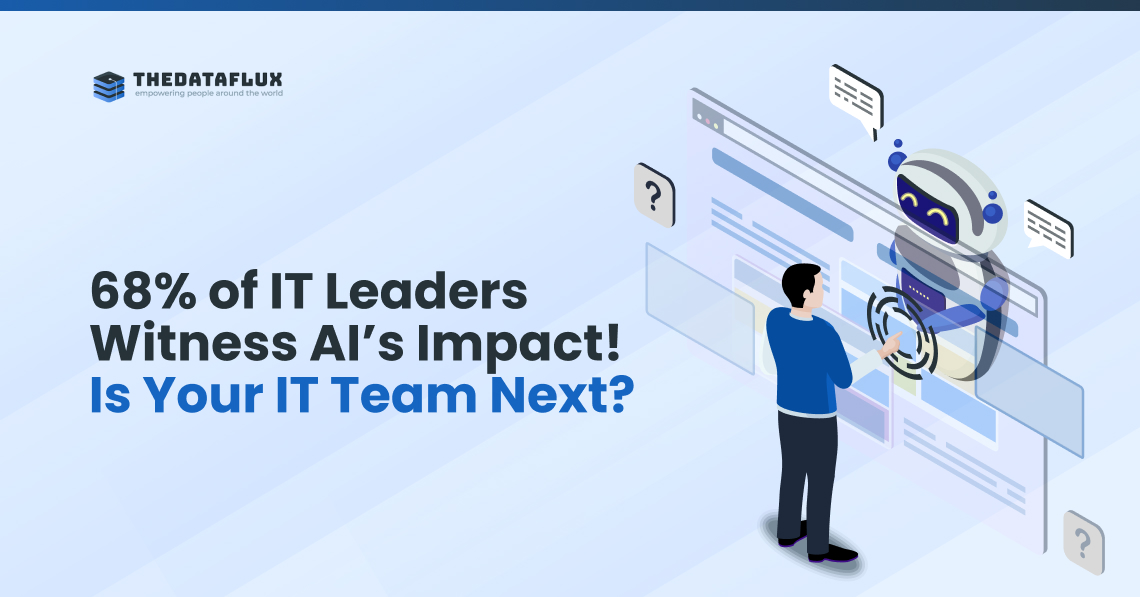
Did you know that over 68% of IT leaders say AI is already reshaping their IT operations? AI is not simply a futuristic figure anymore; it is already changing the IT structure in real-time, from easily answering questions through chatbots to predicting sudden network failures through algorithms.
Reflect on IT back then. Manual troubleshooting that took long hours, doing the same maintenance tasks repeatedly, and coding endlessly – most of it was time-consuming and error-prone by human nature. Now, AI is coming as a revolution, which is taking over all the repetitive tasks, decision-making that is done at a faster pace, and even facilitating new areas of the business that were not accessible before by technology.
In this blog, we’ll explore what AI in IT really is, how it’s reshaping the IT industry, the benefits it brings, and the challenges companies need to watch out for. If you are an IT professional or just interested in knowing how AI is powering the tech world, this guide will give you a clear view of the AI role in IT.
What is Artificial Intelligence?
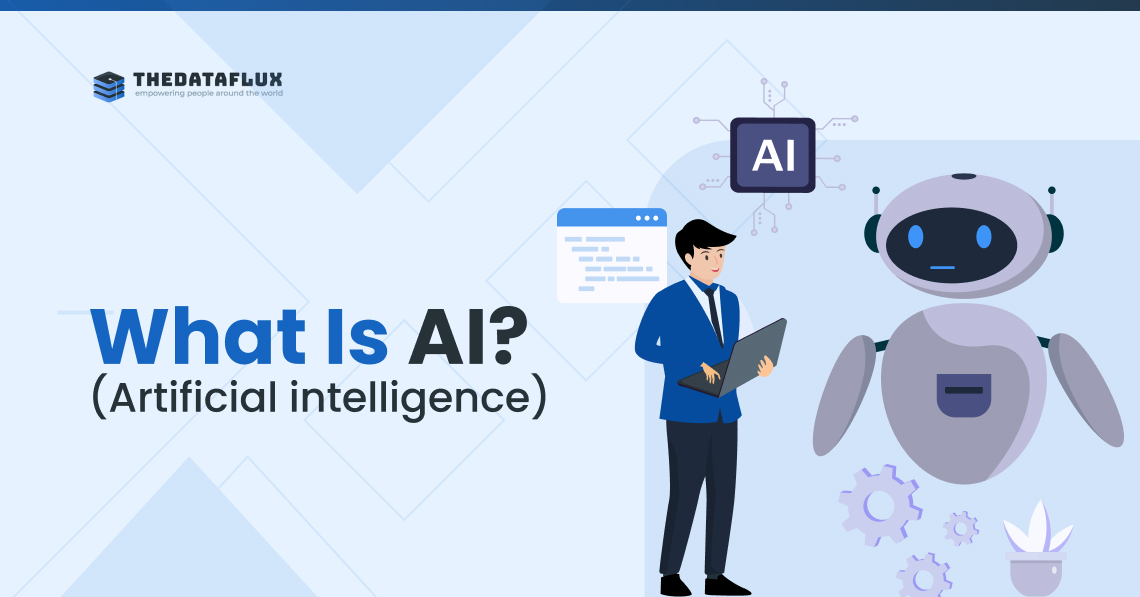
Artificial intelligence (AI) refers to the concept of showing machines how to think and do as humans do, but in less time, with more accuracy, and the capability of handling data much more than any human. It’s not about the production of robots that complement people; rather, it’s the development of systems that can acquire knowledge, adjust, and take actions.
Imagine AI as the “intellect” that is behind the majority of the tools that we use nowadays. When Netflix makes a recommendation for your next watch, when Gmail keeps the junk mails away, or when a chatbot gives an answer to your customer service query at midnight, it is that very AI that is working. It does so by identifying trends, training on historical data, and forecasting the subsequent step.
In the technology sector, this is not merely an attraction. AI is going to be the core of how the systems are controlled, the security is maintained, and the businesses get the wind in their sails. It is the change from traditional “programming” to intelligent, adaptive technology that becomes more efficient the more it is utilized.
The Role of AI in the IT Industry
Artificial Intelligence is no longer just a futuristic concept; it’s already at the core of how IT systems work today. Basically, human workers have been replaced by AI machines that, among other things, can handle big data and solve problems even before they occur.
Think about it: the IT team had to perform a lot of work and spent a lot of time manually troubleshooting system errors, checking logs, and repairing bugs before they resolved a minor issue. Now, AI-powered tools can do that in minutes, sometimes even before anyone notices a glitch.
AI is also a big part of the cybersecurity team. The problem is, as technology advances, so do the criminals. As a result, the traditional ways of securing the network become less effective. AI is capable of analyzing millions of data points in real-time, finding the areas of the network where the intruder is, and sending out very quick alarms, which is something that a human at the same level or speed simply can’t do.
In short, AI in IT is just like having an infinitely intelligent assistant who works 24/7, never forgets, and keeps training every day.
How AI is Transforming IT
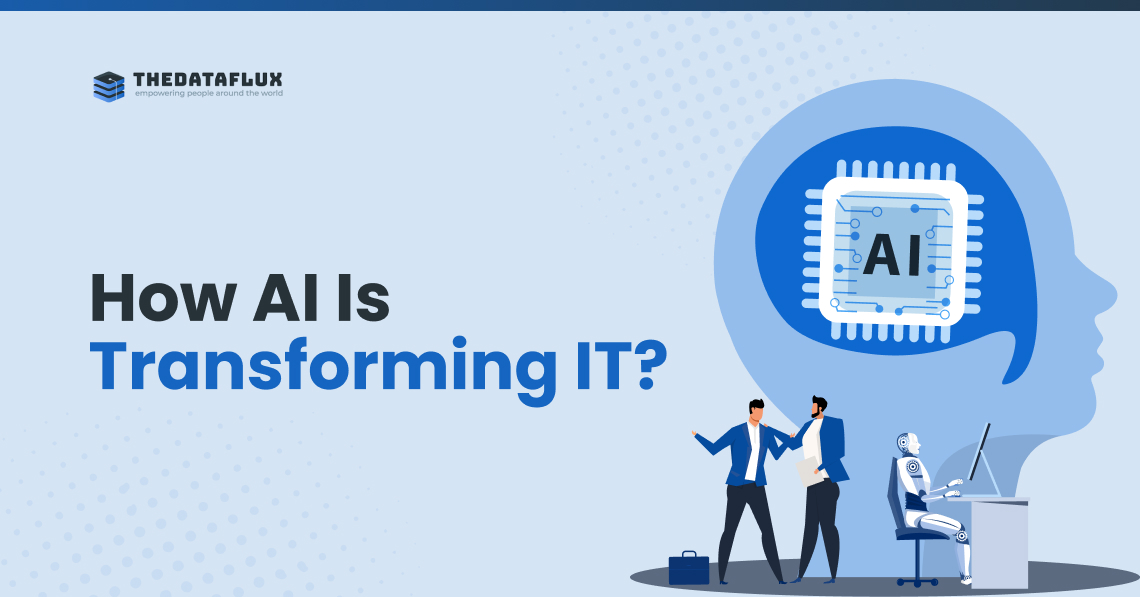
Automating Tasks
Handling repetitive service requests is one of the many IT tasks, along with monitoring systems and managing backups, that can sometimes take an IT team up to several exhausting hours of their time. AI, through automation, frees the professionals who can then concentrate on the complex and creative ones.
Enhancing Decision-Making
The use of AI for data analysis has removed the need for IT leaders to guess. Consequently, decision-making gets quicker, accurate, and more reliable with the help of AI by evaluating the situations that lead to system failures and recommending the best infrastructures to apply.
Driving Innovation
Not only does AI accelerate existing operations, but it also provides the opportunity for new possibilities. The technology is responsible for the innovation that is seen in the department of IT, coming from one of the following areas: the development of intelligent software, the seamless integration of AI-powered chatbots within services, and the creation of predictive maintenance systems.
Transforming IT Roles
The AI is just amazing, for it takes over the routine tasks, thus the IT roles that used to be static are changing into something more exciting and different. Today’s professionals are no longer only technical troubleshooters but are also problem-solvers, strategists, and innovation leaders who oversee AI-powered solutions.
Benefits of AI in Information Technology
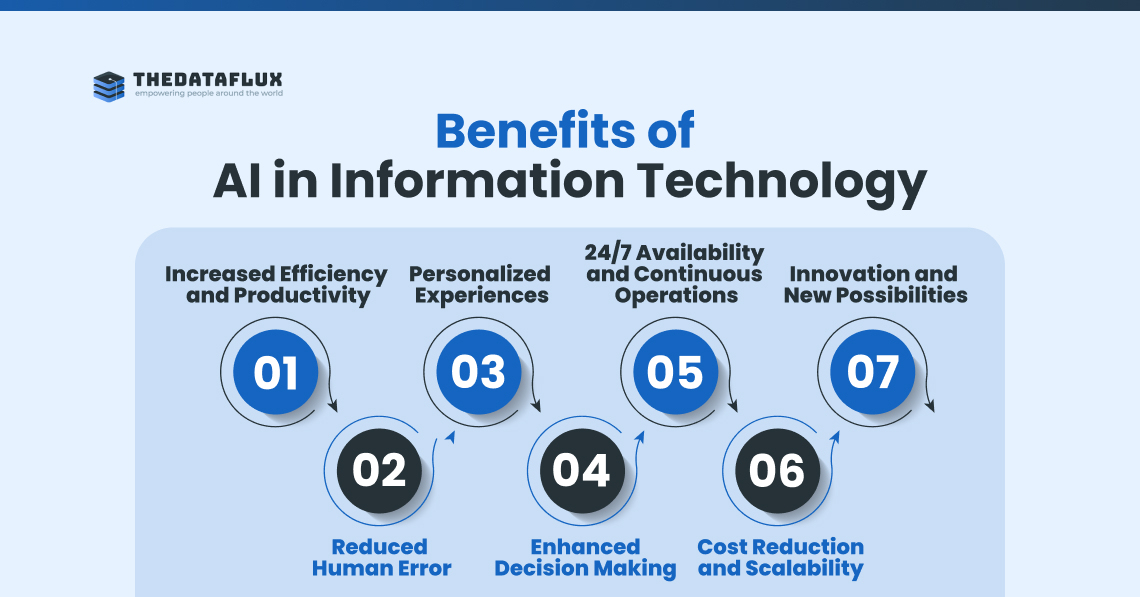
Increased Efficiency and Productivity
AI takes over repetitive and time-consuming tasks, from system monitoring to ticket handling. This means IT teams can focus on higher-value work, boosting overall productivity.
Reduced Human Error
Handling large amounts of data manually increases the risk of mistakes. AI ensures accuracy in tasks like configuration management, security monitoring, and data analysis, cutting down on costly errors.
Personalized Experiences
With AI, IT services can be tailored to users’ needs. From personalized dashboards to smart recommendations, users enjoy a more seamless and customized experience.
Enhanced Decision-Making
AI-powered analytics help IT managers predict issues before they occur, optimize resource usage, and improve system performance. The result? Better, faster, and more reliable decisions.
24/7 Availability and Continuous Operations
Unlike humans, AI doesn’t sleep. AI-driven chatbots, monitoring systems, and automation tools provide round-the-clock support, keeping systems running without interruption.
Cost Reduction and Scalability
By reducing the need for manual labor and optimizing infrastructure, AI lowers operational costs. At the same time, businesses can scale up effortlessly by letting AI handle the extra workload.
Innovation and New Possibilities
Beyond efficiency, AI unlocks new business models, like predictive maintenance, intelligent security systems, and self-healing networks, that were once out of reach.
Challenges and Concerns on Leveraging AI in the IT Industry
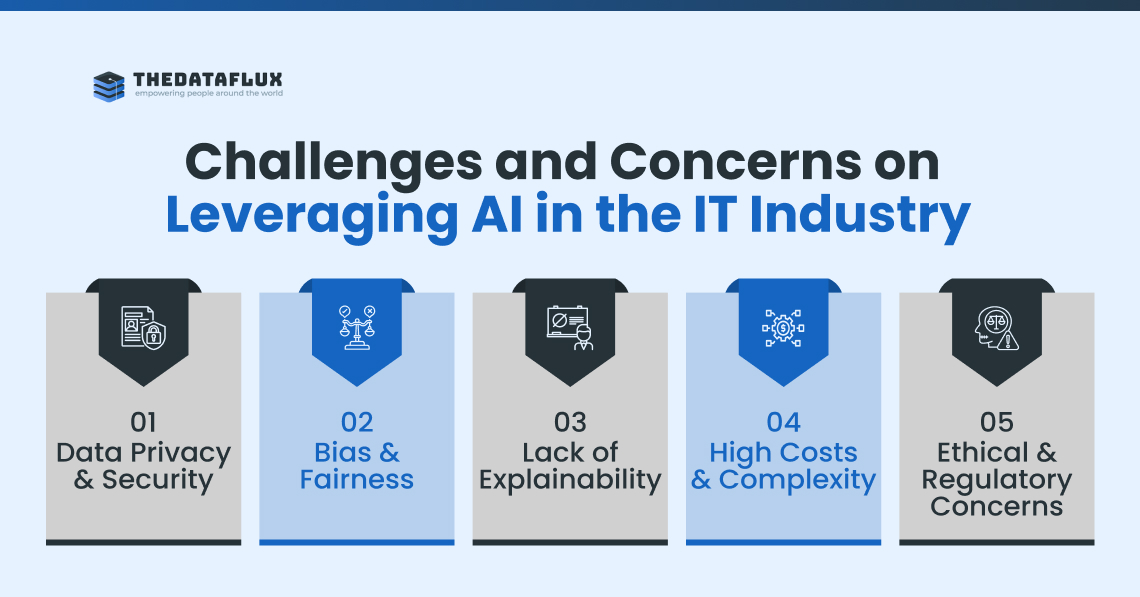
As powerful as AI is, adopting it in IT doesn’t come without challenges. While the benefits are huge, organizations also face hurdles that need careful attention:
Data Privacy & Security
AI systems are heavily dependent on data that is usually a mixture of figures about customers and the company as well. If this data is not handled correctly, it will not only raise privacy issues but also make the system more susceptible to cyberattacks.
Bias & Fairness
AI is a machine learning model that consumes data as input and subsequently learns through this data; if the data is biased, the system will likely generate biased results as well. In the domain of IT, a situation like this may result in biased decision-making, for instance, in the areas of security monitoring or the creation of automated hiring systems.
Lack of Explainability
The major drawback of AI is just the ‘black box’ issue. IT teams may not really know how the various AI algorithms arrive at a decision in certain cases, and this might have the effect of lessening the trust that’s there and making it much harder to fix the problem.
High Costs & Complexity
The process of building and incorporating AI into existing IT systems can not only be very costly, but it can also be very challenging technically. Usually, small and medium-sized enterprises (SMEs) face the struggle of not having enough capital to make the first investment, and also lack the know-how to use AI efficiently.
Ethical & Regulatory Concerns
The increasing use of AI brings about questions of ethics, such as to what extent machines should be given control, and also regulatory issues, as governments are setting new rules concerning AI use and data handling.
Conclusion
AI is not just a fancy phrase that is thrown around the IT industry; it is a changer of the whole game. The IT teams, through the AI, have made a big change in their way of working and in the value that they deliver. This is because, from the time that there is an AI, it has made a system smarter, faster, and more reliable. Still, there are issues that come with it, like security, biases, and high costs, which we cannot just turn a blind eye to.
What we need is to go back to the basics and find the right balance where we will be able to use the efficiency and the innovation that AI offers, but at the same time, take care of the risk in a responsible way. The companies that will have AI as their ally and use it to their advantage will be the winners of the race; the others will have a tough time staying on track.
At The Dataflux, we’re passionate about exploring the impact of emerging technologies like AI and helping readers stay ahead in the digital world.
Hope this blog gave you a clear understanding of AI in the IT industry. Thanks for reading, see you in the next blog!
